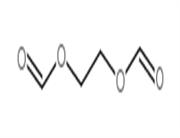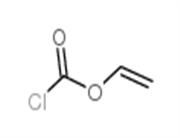1/1
Cyclohexene
$ 1.00
/1KG
- Min. Order1KG
- Purity99%
- Cas No110-83-8
- Supply Ability100kg
- Update time2019-12-31

career henan chemical co
VIP7Y
 China
China
Since:2014-12-17
Address:702, Building 10, East District, National University Science and Technology Park, High tech Zone, Zh
Enterprise Verified
Business Bank account
Basic Contact Infomation
Business Address
Trade Company



Chemical Properties
| Product Name | Cyclohexene |
| CAS No | 110-83-8 |
| EC-No | |
| Min. Order | 1KG |
| Purity | 99% |
| Supply Ability | 100kg |
| Release date | 2019/12/31 |
▼
▲
Product Name:
Cyclohexene
Synonyms:
Cyclohexene/Cycloheptanone;1-Cyclohexene;3,4,5,6-tetrahydrobenzene;Benzene, tetrahydro-;benzene,tetrahydro-;Cyclohex-1-ene;cykloheksen(polish);Hexanaphthylene
CAS:
110-83-8
MF:
C6H10
MW:
82.14
EINECS:
203-807-8
Product Categories:
Pharmaceutical Intermediates;Solvent;solvents and intermediates
Mol File:
110-83-8.mol

▼
▲
Cyclohexene Chemical Properties
▼
▲
Melting point
-104 °C
Boiling point
83 °C(lit.)
density
0.811 g/mL at 25 °C(lit.)
vapor density
2.8 (vs air)
vapor pressure
160 mm Hg ( 20 °C)
refractive index
n20/D 1.446(lit.)
Fp
10 °F
storage temp.
Flammables area
solubility
water: insoluble
form
Liquid
color
Clear colorless
PH
7-8 (0.2g/l, H2O, 20℃)
explosive limit
1.2-7.7%(V)
Water Solubility
insoluble
Merck
14,2727
BRN
906737
Henry's Law Constant
3.85 x 10-2 atm?m3/mol at 25 °C (Nielsen et al., 1994)
Exposure limits
TLV-TWA 300 ppm (~1015 mg/m3) (ACGIH, OSHA, and NIOSH); IDLH 10,000 ppm (NIOSH).
Stability:
Stable in the absence of air - may form peroxides in storage. Incompatible with oxidizing agents. Highly flammable.
InChIKey
HGCIXCUEYOPUTN-UHFFFAOYSA-N
CAS DataBase Reference
110-83-8(CAS DataBase Reference)
NIST Chemistry Reference
Cyclohexene(110-83-8)
EPA Substance Registry System
Cyclohexene (110-83-8)
▼
▲
Safety Information
▼
▲
Hazard Codes
F,Xn
Risk Statements
11-21/22-65
Safety Statements
16-29-33-36/37-62
RIDADR
UN 2256 3/PG 2
WGK Germany
1
RTECS
GW2500000
Autoignition Temperature
590 °F
TSCA
Yes
HazardClass
3
PackingGroup
II
HS Code
29021990
Hazardous Substances Data
110-83-8(Hazardous Substances Data)
Toxicity
LD50 orally in Rabbit: 1300 mg/kg
▼
▲
MSDS Information
▼
▲
Provider
Language
ACROS
English
SigmaAldrich
English
ALFA
English
▼
▲
Cyclohexene Usage And Synthesis
▼
▲
Cycloolefin
Cyclohexene is a cyclic olefin, and is a colorless, flammable liquid with a special pungent odor at room temperature. Long-term placement in the air it can be oxidated into peroxide by air. Naturally present in coal tar, soluble in acetone, carbon tetrachloride, benzene, ether, hexane, ethanol and other organic solvents, can form binary azeotrope with lower alcohols, acetic acid, etc. Cyclohexene has the general nature of olefin, decomposes rapidly in the presence of uranium salts under sunlight or ultraviolet rays, is constant as being heated in a sealed tube at 200 ℃ for a long time, forms benzene and naphthalene at 400~500 ℃.
It is obtained by dehydration of cyclohexanol at high temperature in the presence of an acid catalyst in industrial. It is obtained by sulfated dehydration of cyclohexanol in the laboratory.

Figure 1 is the chemical reaction equation of sulfated dehydration of cyclohexanol to obtain cyclohexene.
Cyclohexene is an important chemical raw materials, used for the production of adipic acid, adipic aldehyde, maleic acid, Cyclohexane acid, cyclohexane aldehyde, maleic acid, cyclohexyl carboxylic acid, cyclohexanecarboaldehyde in industry. It is also used as the extraction agent, the stabilizer having a high-octane gasoline. Inhalation can cause mild poisoning.
Here are some of these important compounds prepared by cyclohexene, (1)chlorinated cyclohexane is made, useful as pharmaceutical intermediates, a solvent and rubber additives. (2) cyclohexanone is made from cyclohexene, can be used as intermediates raw materials of medicine, pesticides, perfumes, and dyes, as polymer modifiers. (3) cyclohexyl acetate is made, used as a plastic solvent. (4) cyclohexanone phenol is made, can be used as raw materials medicine and pesticides. (5) aminocyclohexanol is made, can be used as surfactants and emulsifiers. (6) The product can also be used directly as organic intermediates, solvents and additives when spices are prepared. It can be used in the preparation of butadiene in the laboratory.
The above information were edited and collated by Yan Yanyong of Chemicalbook.
It is obtained by dehydration of cyclohexanol at high temperature in the presence of an acid catalyst in industrial. It is obtained by sulfated dehydration of cyclohexanol in the laboratory.

Figure 1 is the chemical reaction equation of sulfated dehydration of cyclohexanol to obtain cyclohexene.
Cyclohexene is an important chemical raw materials, used for the production of adipic acid, adipic aldehyde, maleic acid, Cyclohexane acid, cyclohexane aldehyde, maleic acid, cyclohexyl carboxylic acid, cyclohexanecarboaldehyde in industry. It is also used as the extraction agent, the stabilizer having a high-octane gasoline. Inhalation can cause mild poisoning.
Here are some of these important compounds prepared by cyclohexene, (1)chlorinated cyclohexane is made, useful as pharmaceutical intermediates, a solvent and rubber additives. (2) cyclohexanone is made from cyclohexene, can be used as intermediates raw materials of medicine, pesticides, perfumes, and dyes, as polymer modifiers. (3) cyclohexyl acetate is made, used as a plastic solvent. (4) cyclohexanone phenol is made, can be used as raw materials medicine and pesticides. (5) aminocyclohexanol is made, can be used as surfactants and emulsifiers. (6) The product can also be used directly as organic intermediates, solvents and additives when spices are prepared. It can be used in the preparation of butadiene in the laboratory.
The above information were edited and collated by Yan Yanyong of Chemicalbook.
Chemical properties
Colorless flammable liquid. Insoluble in water, soluble in ether.
Uses
- Used in organic synthesis, it is also used as a solvent.
- Cyclohexene is used as organic synthetic raw materials, such as synthetic raw materials for lysine, cyclohexanone, phenol, polycycloolefin resin, chlorinated cyclohexane, rubber additives, cyclohexanol, etc. It is also used as a catalyst solvent and petroleum extraction agent, high octane gasoline stabilizer.
- Cyclohexene is used for Preparation of adipic acid, maleic acid, hexahydro benzoic acid and acetaldehyde, preparation of butadiene in the laboratory. It is used as high-octane gasoline stabilizer.
Production method
Cyclohexanol is heated to generate cyclohexene in the presence of sulfuric acid catalyst, distilled to obtain crude products. Washed with a fine saturated salt solution, then sodium sulfate solution is used to neutralize traces of acid, then washed with water, layered, dried, filtration, distillation, collecting 82-85 ℃ distillate products to obtain cyclohexene.
Flammability hazard characteristics
In case of fire, high temperature, oxidant, it is flammable, burning produces irritant smoke.
Storage Characteristics
Treasury ventilation low-temperature drying, stored separately from oxidants and acids. Not long storage to prevent polymerization.
Chemical Properties
Cyclohexene is a colorless liquid (cyclic alkene) with a sweetish odor.
Physical properties
Clear, colorless liquid with a sweet odor. Odor threshold concentration is 0.18 ppm (quoted, Amoore and Hautala, 1983).
Uses
It occurs in coal tar and is obtained by catalyticdehydration of cyclohexanol and dehydrogenationof cyclohexane. Cyclohexene isused in making adipic acid, maleic acid,and butadiene; in oil extraction; as a stabilizerfor high-octane gasoline; and in organicsynthesis.
Uses
Alkylation component. In the manufacture of adipic acid, maleic acid, hexahydrobenzoic acid and aldehyde. To prepare butadiene in the laboratory. Has been suggested for the synthesis of maleic acid and as stabilizer for high octane gasoline.
Definition
ChEBI: A cycloalkene that is cylohexane with a single double bond.
Production Methods
Cyclohexene is prepared by dehydration of cyclohexanol by thermal reaction of an ethylene–propylene–butadiene mixture (1).
General Description
A colorless liquid. Insoluble in water and less dense than water. Flash point 20°F. Vapors heavier than air. Inhalation of high concentrations may have a narcotic effect. Used to make other chemicals.
Air & Water Reactions
Highly flammable. Insoluble in water.
Reactivity Profile
Cyclohexene may react vigorously with strong oxidizing agents. May react exothermically with reducing agents to release hydrogen gas. In the presence of various catalysts (such as acids) or initiators, may undergo exothermic addition polymerization reactions. Oxidizes readily in air to form unstable peroxides that may explode spontaneously [Bretherick, 1979 p.151-154].
Health Hazard
There are very few toxicological data availableon cyclohexene. Inhalation producesirritation of the eyes and respiratory tract. Itis also an irritant to skin. Its acute toxicityis low; the toxic effects are similar to thoseof cyclohexane. Exposure to high concentrationsor ingestion may cause drowsiness.Single exposures to 15,000 ppm of cyclohexenecould be lethal to rats.
Fire Hazard
HIGHLY FLAMMABLE: Will be easily ignited by heat, sparks or flames. Vapors may form explosive mixtures with air. Vapors may travel to source of ignition and flash back. Most vapors are heavier than air. They will spread along ground and collect in low or confined areas (sewers, basements, tanks). Vapor explosion hazard indoors, outdoors or in sewers. Runoff to sewer may create fire or explosion hazard. Containers may explode when heated. Many liquids are lighter than water.
Safety Profile
Moderately toxic by inhalation and ingestion. A very dangerous fire hazard when exposed to flame; can react with oxidizers. Dangerous; keep away fromheat and open flame. To fight fire, use foam, CO2, dry chemical.
Potential Exposure
May be used as an intermediate in making other chemicals (e.g., adipic acid, maleic acid, hex- ahydro benzoic acid), oil extraction and as a catalyst solvent.
Environmental fate
Biological. Cyclohexene biodegrades to cyclohexanone (Dugan, 1972; Verschueren, 1983).
Photolytic. The following rate constants were reported for the reaction of cyclohexene with OH radicals in the atmosphere: 6.80 x 10-11 cm3/molecule?sec (Atkinson et al., 1979), 6.75 x 10-11 cm3/molecule?sec at 298 K (Sablji? and Güsten, 1990), 5.40 x 10-11 cm3/molecule?sec at 298 K (Rogers, 1989), 1.0 x 10-10 cm3/molecule?sec at 298 K (Atkinson, 1990); with ozone in the gasphase: 1.69 x 10-16 cm3/molecule?sec at 298 K (Japar et al., 1974), 2.0 x 10-16 at 294 K (Adeniji et al., 1981), 1.04 x 10-16 cm3/molecule?sec (Atkinson et al., 1983), 1.04 x 10-16 at 298 K (Atkinson and Carter, 1984); with NO3 in the atmosphere: 5.26 x 10-13 cm3/molecule?sec (Sablji? and Güsten, 1990); 5.3 x 10-13 cm3/molecule?sec at 298 K (Atkinson, 1990), and 5.28 x 10-13 cm3/molecule?sec at 295 K (Atkinson, 1991). Cox et al. (1980) reported a rate constant of 6.2 x 10-11 cm3/molecule?sec for the reaction of gaseous cyclohexene with OH radicals based on a value of 8 x 10-12 cm3/molecule?sec for the reaction of ethylene with OH radicals.
Chemical/Physical. Gaseous products formed from the reaction of cyclohexene with ozone were (% yield): formic acid , carbon monoxide , carbon dioxide, ethylene, and valeraldehyde (Hatakeyama et al., 1987). In a smog chamber experiment conducted in the dark at 25 °C, cyclohexane reacted with ozone. The following products and their respective molar yields were: oxalic acid (6.16%), malonic acid (6.88%), succinic acid (0.63%), glutaric acid (5.89%), adipic acid (2.20%), 4-hydroxybutanal (2.60%), hydroxypentanoic acid (1.02%), hydroxyglutaric acid (2.33%), hydroxyadipic acid (1.19%), 4-oxobutanoic acid (6.90%), 4- oxopentanoic acid (4.52%), 6-oxohexanoic acid (4.16%), 1,4-butandial (0.53%), 1,5-pentanedial (0.44%), 1,6-hexanedial (1.64%), and pentanal (17.05%).
Grosjean et al. (1996) investigated the atmospheric chemistry of cyclohexene with ozone and an ozone-nitrogen oxide mixture under ambient conditions. The reaction of cyclohexene and ozone in the dark yielded pentanal and cyclohexanone. The sunlight irradiation of cyclohexene with ozonenitrogen oxide yielded the following carbonyls: formaldehyde, acetaldehyde, acetone, propanal, butanal, pentanal, and a C4 carbonyl.
Cyclohexene reacts with chlorine dioxide in water forming 2-cyclohexen-1-one (Rav-Acha et al., 1987).
Photolytic. The following rate constants were reported for the reaction of cyclohexene with OH radicals in the atmosphere: 6.80 x 10-11 cm3/molecule?sec (Atkinson et al., 1979), 6.75 x 10-11 cm3/molecule?sec at 298 K (Sablji? and Güsten, 1990), 5.40 x 10-11 cm3/molecule?sec at 298 K (Rogers, 1989), 1.0 x 10-10 cm3/molecule?sec at 298 K (Atkinson, 1990); with ozone in the gasphase: 1.69 x 10-16 cm3/molecule?sec at 298 K (Japar et al., 1974), 2.0 x 10-16 at 294 K (Adeniji et al., 1981), 1.04 x 10-16 cm3/molecule?sec (Atkinson et al., 1983), 1.04 x 10-16 at 298 K (Atkinson and Carter, 1984); with NO3 in the atmosphere: 5.26 x 10-13 cm3/molecule?sec (Sablji? and Güsten, 1990); 5.3 x 10-13 cm3/molecule?sec at 298 K (Atkinson, 1990), and 5.28 x 10-13 cm3/molecule?sec at 295 K (Atkinson, 1991). Cox et al. (1980) reported a rate constant of 6.2 x 10-11 cm3/molecule?sec for the reaction of gaseous cyclohexene with OH radicals based on a value of 8 x 10-12 cm3/molecule?sec for the reaction of ethylene with OH radicals.
Chemical/Physical. Gaseous products formed from the reaction of cyclohexene with ozone were (% yield): formic acid , carbon monoxide , carbon dioxide, ethylene, and valeraldehyde (Hatakeyama et al., 1987). In a smog chamber experiment conducted in the dark at 25 °C, cyclohexane reacted with ozone. The following products and their respective molar yields were: oxalic acid (6.16%), malonic acid (6.88%), succinic acid (0.63%), glutaric acid (5.89%), adipic acid (2.20%), 4-hydroxybutanal (2.60%), hydroxypentanoic acid (1.02%), hydroxyglutaric acid (2.33%), hydroxyadipic acid (1.19%), 4-oxobutanoic acid (6.90%), 4- oxopentanoic acid (4.52%), 6-oxohexanoic acid (4.16%), 1,4-butandial (0.53%), 1,5-pentanedial (0.44%), 1,6-hexanedial (1.64%), and pentanal (17.05%).
Grosjean et al. (1996) investigated the atmospheric chemistry of cyclohexene with ozone and an ozone-nitrogen oxide mixture under ambient conditions. The reaction of cyclohexene and ozone in the dark yielded pentanal and cyclohexanone. The sunlight irradiation of cyclohexene with ozonenitrogen oxide yielded the following carbonyls: formaldehyde, acetaldehyde, acetone, propanal, butanal, pentanal, and a C4 carbonyl.
Cyclohexene reacts with chlorine dioxide in water forming 2-cyclohexen-1-one (Rav-Acha et al., 1987).
Shipping
UN2256 Cyclohexene, Hazard Class: 3; Labels: 3-Flammable liquid.
Purification Methods
Free cyclohexene from peroxides by washing with successive portions of dilute acidified ferrous sulfate, or with NaHSO3 solution, then with distilled water, drying with CaCl2 or CaSO4, and distilling under N2. Alternative methods for removing peroxides include passage through a column of alumina, refluxing with sodium wire or cupric stearate (then distilling from sodium). The diene is removed by refluxing with maleic anhydride before distilling under vacuum. Treatment with 0.1moles of MeMgI in 40mL of diethyl ether removes traces of oxygenated impurities. Other purification procedures include washing with aqueous NaOH, drying and distilling under N2 through a spinning band column, redistilling from CaH2, storing under sodium wire, and passing through a column of alumina, under N2, immediately before use. Store it at <0o under argon. [Coleman & Johnstone Org Synth Coll Vol I 83 1955, Carson & Ipatieff Org Synth Coll Vol II 152 1943, Woon et al. J Am Chem Soc 108 7990 1986, Wong et al. J Am Chem Soc 109 3428 1987.] [Beilstein 5 IV 218.]
Incompatibilities
Vapor may form explosive mixture with air. The substance can form explosive peroxides. The sub- stance may polymerize under certain conditions. Incompatible with oxidizers (chlorates, nitrates, peroxides, permanganates, perchlorates, chlorine, bromine, fluorine, etc.); contact may cause fires or explosions. Keep away from alkaline materials, strong bases, strong acids, oxoa- cids, epoxides.
Waste Disposal
Dissolve or mix the material with a combustible solvent and burn in a chemical incinera- tor equipped with an afterburner and scrubber. All federal, state, and local environmental regulations must be observed.
▼
▲
Cyclohexene Preparation Products And Raw materials
▼
▲
Preparation Products
Adipic acid-->beta-Carotene-->Bromopyruvic acid-->Cyclohexene oxide-->1-Bromocyclohex-1-ene-->1,3-CYCLOHEXADIENE-->IODOCYCLOHEXANE-->3-Amino-2-azepanone-->CIS-2-AMINOCYCLOHEXANOL HYDROCHLORIDE-->Atovaquone-->CINITAPRIDE HYDROGEN TARTRATE-->polyphenylene (IV)-->1-Methylcyclohexanol-->METHYL 4-CYANO-3-CYCLOHEXECARBOXYLATE-->Cyclohexanecarboxaldehyde-->METHYL 4-(AMINOMETHYL)CYCLOHEXANECARBOXYLATE-->Cyclohexylbenzene-->TRANS-1,2-CYCLOHEXANEDIOL-->2-CHLOROCYCLOHEXANOL
Raw materials
Sulfuric acid -->Sodium sulfate-->Cyclohexanol
▼
▲
Company Profile Introduction
Established in 2014,Career Henan Chemical Co. is a manufacturerspecializing in the sale of fine chemicals. Mainly deals in the sales of: Pharmaceutical intermediates OLED intermediates: Pharmaceutical intermediates; OLED intermediates;



